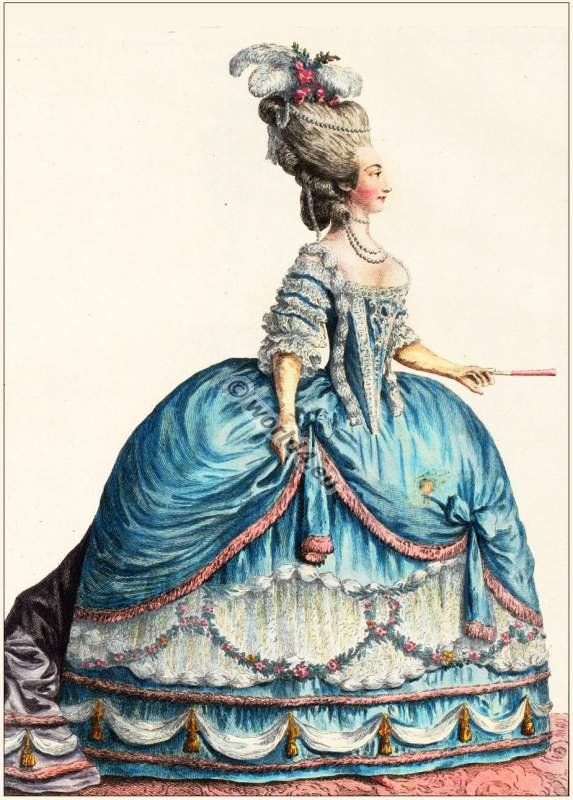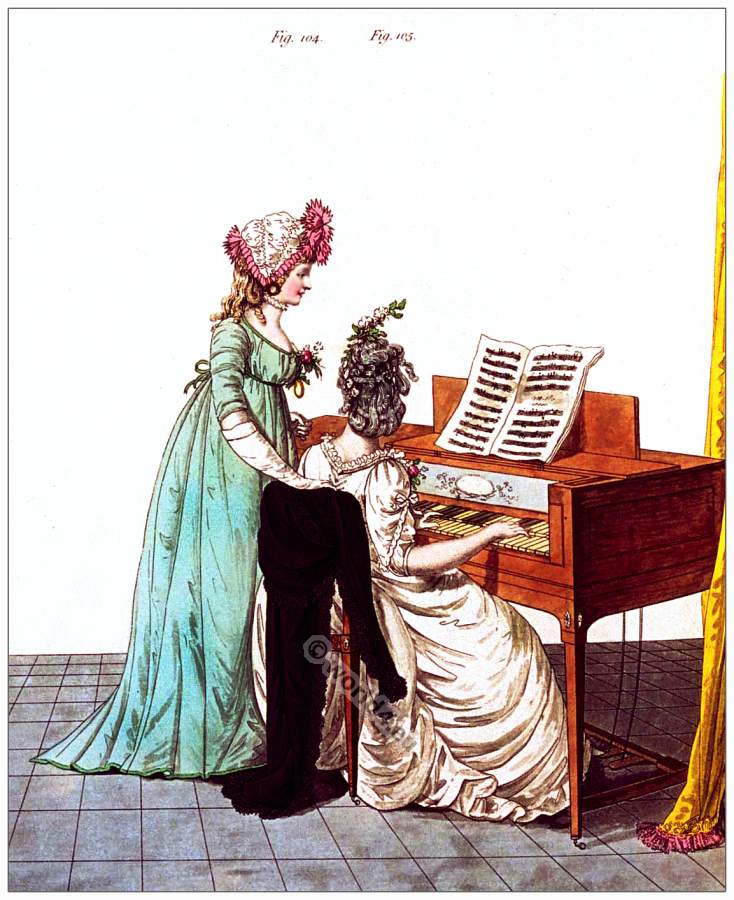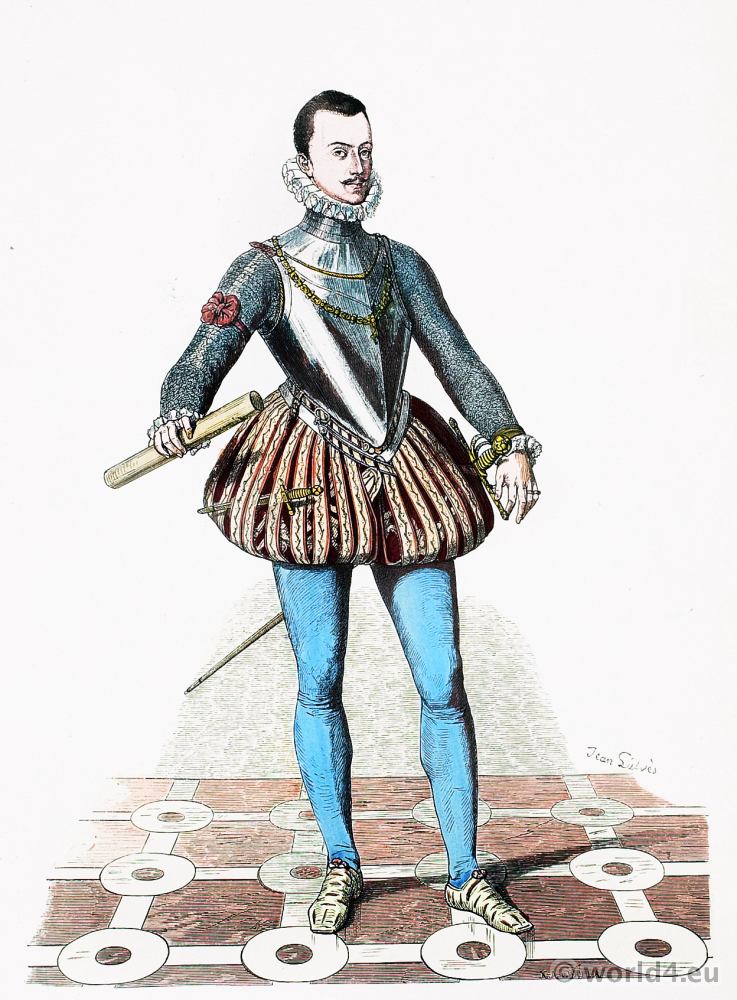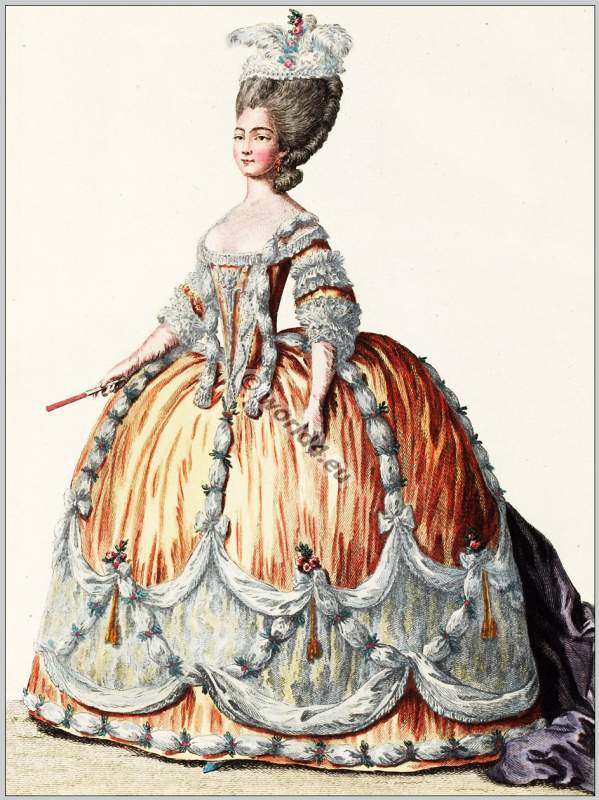Court Dress, made by Madame Beauvais, Milliner to her Majesty.
FIG. XLIII.
The hair in light curls and ringlets; Chignon turned up plain. Cap made of white crape with gold spangles, the top of carmelite coloured silk velvet. Two white ostrich feathers placed on the left side; a diamond star in the front, and diamond pins round the cap. Lappets of point-lace. Petticoat of white crape, embroidered in gold foil and spangles, flounced with point-lace, and headed with a white satin riband embroidered in gold, trimmed with gold tassels.
Body and train of carmelite coloured silk. velvet, with short sleeves, and half full sleeves of white crape with gold spangles, bound with gold lace, trimmed with gold tassels; the body laced with gold cord and the train trimmed with gold fringe. Sash of gold lace. Triple ruffles of point-lace. Tippet of blonde, the outside of gold, imitating fur. Diamond necklace and ear-rings. White shoes embroidered in gold.
N. B. This Dress was made by Madame Beauvais, Milliner to her Majesty.
Source: The Gallery of Fashion Vol. 1,. April 1794 to March 1795. Published by Nikolaus von Heideloff, London.







